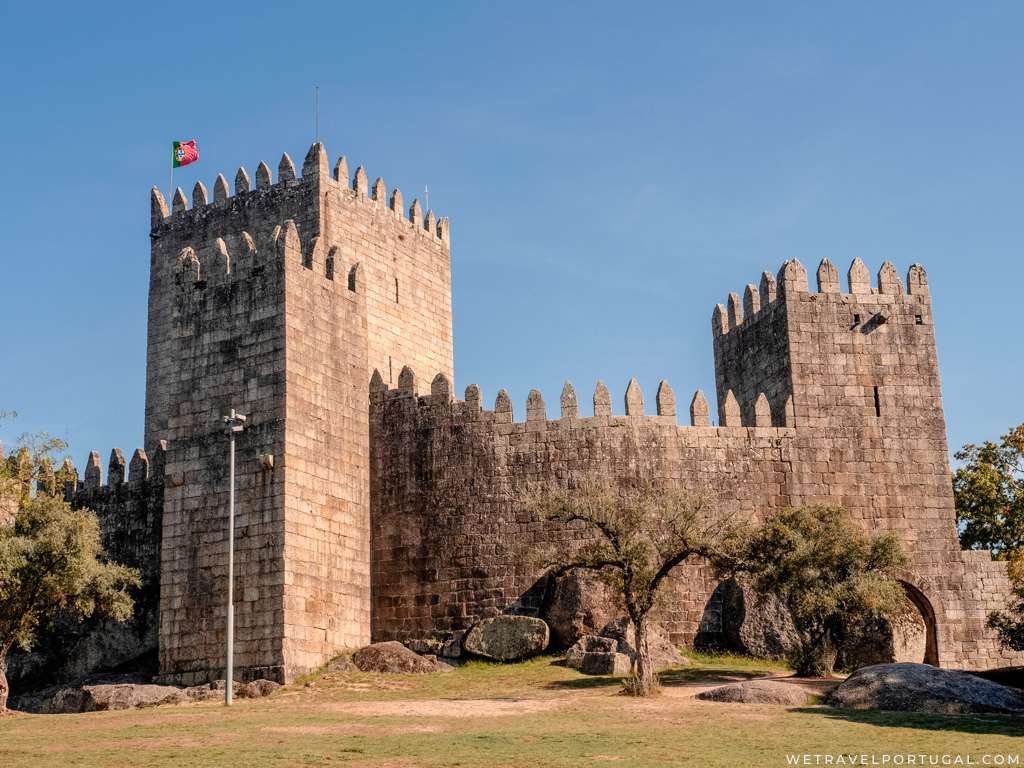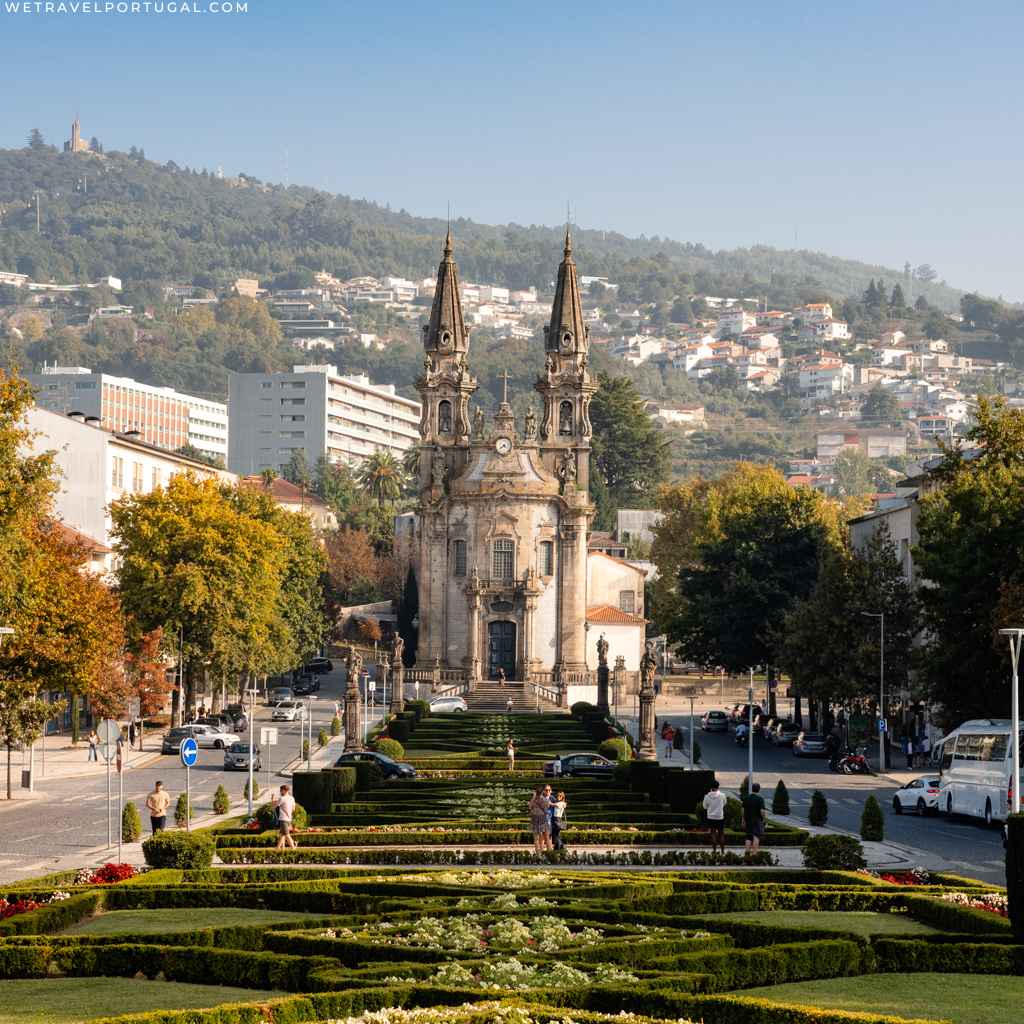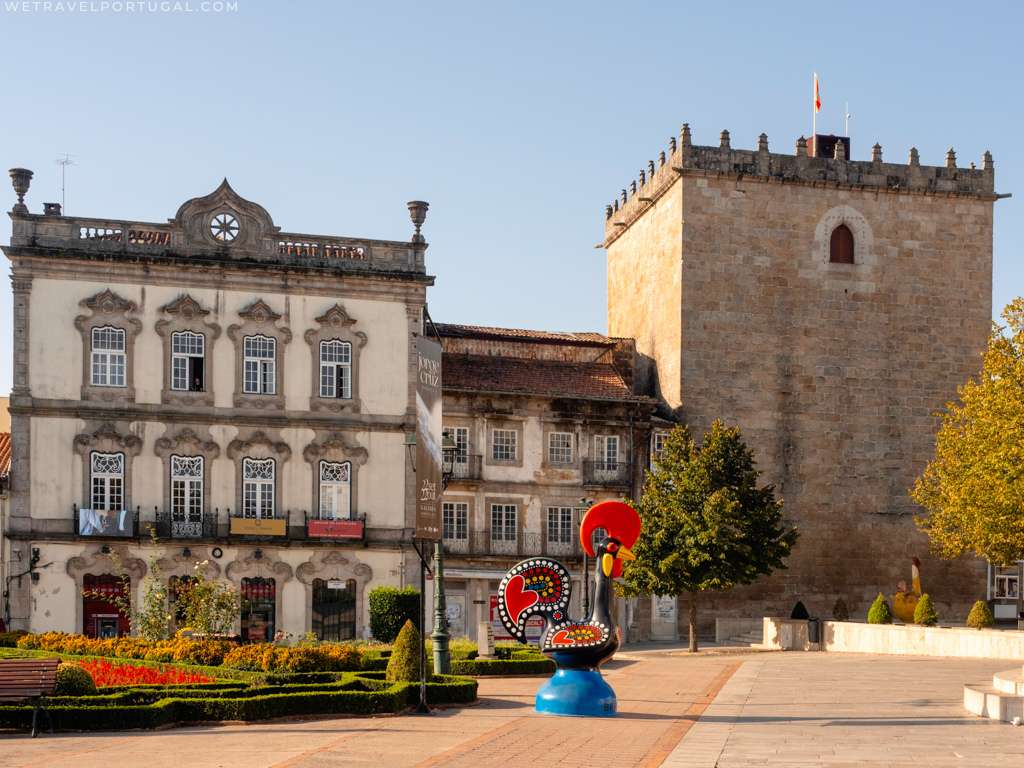Looking to discover Northern Portugal? Although it’s often overshadowed by its southern and perhaps much more famous counterparts, this is one of Portugal’s best regions to explore. It’s a diverse region that stretches from the rugged Atlantic coastlines to the lush vineyards of the Douro Valley, to the fortified border towns on Portugal’s northern border with Spain. It’s a region that effortlessly combines history, and ancient traditions seamlessly with more modern life. Due to that history, it’s a region that’s often referred to as the ‘cradle of Portugal’.
Northern Portugal – Região do Norte
Região do Norte, to give the official name of the northernmost region of Portugal, is renowned for its cultural heritage and natural beauty. It is the third largest region in Portugal by land area, and the most populous region in Portugal. Its biggest city is Porto (237,000), followed by historic Braga (181,000), followed by Viana do Castelo (88,000) with its stunning coastal views.
This region is the birthplace of Portugal, with a history that is deeply intertwined with the nation’s origins. The area is celebrated for its viniculture, especially the world-famous Port wine produced in the Douro Valley, but also its sparkling wines (espumantes) and vinho verde (green wine). The region’s historical wealth is evident in its numerous UNESCO World Heritage Sites, including the historic center of Porto and the Alto Douro Wine Region.

The 11 Best things to See and Do North Portugal
With an introduction to this diverse region out of the way. Now, let’s explore the 12 must-see attractions in Northern Portugal!
Porto
Porto, the region’s largest city, is an incredible blend of the old and the new. It’s famous for its stately bridges, the historic Ribeira district, and, of course, its port wine cellars. The city’s charm lies in its narrow-cobbled streets, baroque churches, and the buzzing contemporary art scene.
Douro Valley
Of course, any mention of Porto, is combined with the Douro Valley. The Douro Valley, a UNESCO World Heritage Site, is not just must-visit for wine enthusiasts. This region is where Port wine (Vinho do Porto) is produced, and it offers stunning landscapes of terraced vineyards along the Douro River. The same river that winds past Porto on its way to the sea. Wine tours and river cruises are popular activities here. It’s not just for wine enthusiasts, the vistas and viewpoints are stunning, as is the opportunity for outdoor activities. Hiking, biking and kayaking to name a few!
Braga
Braga, known as the “Portuguese Rome” is a city rich in religious heritage. That ‘Portuguese Rome’ title refers to its plazas and squares which were supposedly inspired by the religious elites’ visits to Rome in the 16th century. The city’s historical center is a charming mix of gothic, baroque, and modernist architecture. It’s also home to the stunning Bom Jesus do Monte sanctuary, with its iconic baroque staircase.
Guimarães
Guimarães, which is often referred to as the birthplace of Portugal, is a historic city with a well-preserved medieval center. It’s biggest attractions include Guimarães Castle (Castelo de Guimarães), the Palace of the Dukes of Braganza, and the stunning hillside retreat of Monte de Penha.

Peneda-Gerês National Park
For nature lovers, the Peneda-Gerês National Park is truly an unmissable destination. It represents one of Portugal’s wildest and most natural areas, with surprisingly few international visitors. It spans across rugged hills, with clear rivers, cascading waterfalls, and diverse flora and fauna. It’s an ideal spot for hiking, bird watching, and immersing in serene nature. However, to get there you’ll need either personal transport, or a local tour. Public transport in the region is lacking.
Amarante
Located on a tributary of the river Douro is the idyllic town of Amarante. It’s well known for its historical bridge and São Gonçalo Church. It’s a historic town, famous across Portugal for its sweets and cakes.
Chaves
In the far north of Portugal, just 10km from the Spanish border, is Chaves. A city rich in Roman history, and famous for its thermal springs and historical center. It’s a traditional border town and fortified with its own castle – Castelo de Chaves. Chaves is also the starting or ending point of the N2 (Estrada Nacional 2) a road that traverses Portugal from north to south.
Barcelos
Barcelos is synonymous with the Portuguese rooster (Galo de Barcelos). It is a symbol of good fortune and a common symbol found across Portugal. Barcelos is a small city, a vibrant place where history, legends, and religion all blend into a romantic riverside city. The city also hosts one of the largest weekly markets in Portugal, where you can find a variety of local crafts and ceramics, including the famous Barcelos Rooster.

Lamego
Lamego is a small city in the Douro Valley. It’s one of the best places to base yourself in if you’re exploring the Douro Valley, but also home to a castle, cathedral and several historic wineries and vineyards. Its most famous attraction is the 18th century baroque Sanctuary of Our Lady of Remedies (Santuário de Nossa Senhora dos Remédios).
Miranda do Douro
In the northeastern corner of the Northern Region of Portugal is Miranda do Douro. A small town on the border with Spain. The town is famous for its dramatic canyon views over the Douro River, yes, the very same Douro River that flows across Portugal to Porto, and traditional folk music and dance. It’s a remote area of Portugal that sees very few international visitors.
Viana do Castelo
Viana do Castelo is a small city on the mouth of the Lima River. It’s famous for its folklore, traditional costumes, and the pilgrimage of Nossa Senhora da Agonia. One of the city’s most popular attractions is the Santa Luzia Basilica, offering incredible views of the surrounding landscape, and a key point on the Caminho de Santiago.

Braganza
The last place we’ll mention is the historic city of Braganza (Bragança), the historical capital of the region of Trás-os-Montes. It’s an impressive fortified city that once protected Portugal’s north-eastern flank. As well as the fortifications, you’ll find a cathedral,
When to Visit North Portugal
Northern Portugal’s diverse landscapes, towns, and cities make it a true year-round destination. Summers are vibrant with numerous festivals and a bustling atmosphere in coastal towns. June brings Festa de São João to Porto. The summer is also a great time to discover the traditional seaside atmosphere of many of the coastal towns and villages.
Moving into Autum and winter, visiting Douro Valley during the grape harvest (September-October) is particularly special. Visitors can witness and partake in the traditional wine-making process, with barefoot grape crushing a popular activity at many of the traditional vineyards.
Winters are milder compared to the rest of Europe, making it an ideal time for exploring cities and enjoying the region’s gastronomy. But it typically is wetter and more humid than further south in Portugal, so you should be prepared for wet and windy conditions. Spring is perfect for outdoor activities, with pleasant weather and fewer crowds than summer. Making it a true year-round destination!

Getting to Northern Portugal
Porto’s international airport serves as the main gateway to Northern Portugal. Additionally, Lisbon is also a major entry point for international travellers, with fast and convenient connections to Porto and beyond by rail and train. The regions bigger towns and cities are well-connected by rail and road, making travel convenient. To fully experience the region’s charm, renting a car is advisable, as it allows access to more remote areas and scenic drives through the countryside.
If you’re looking at renting a car, read our guide to car rental here! It covers everything you need to know and how to avoid the extra costs.
Where will you be visiting in Northern Portugal?
